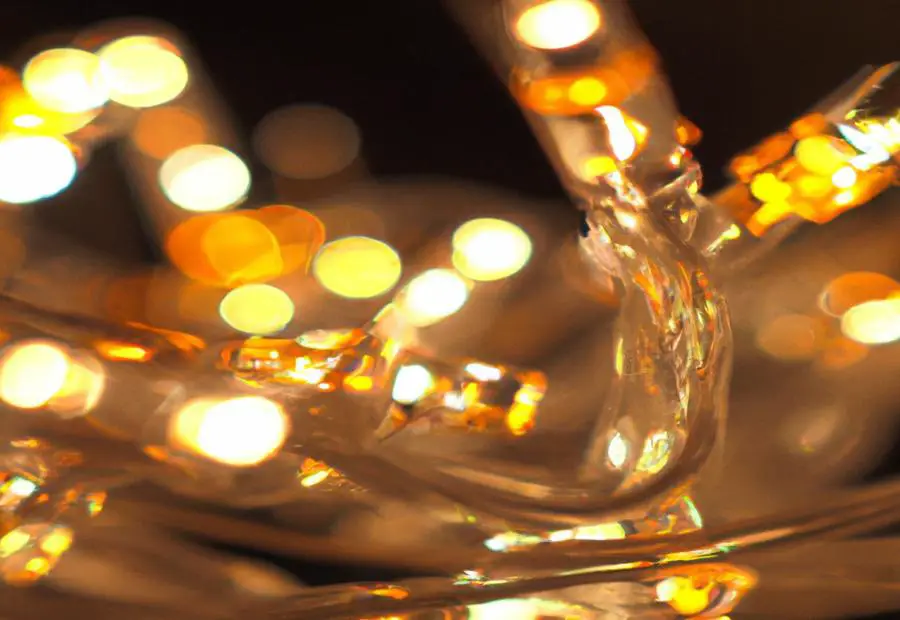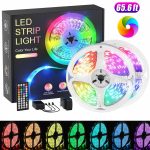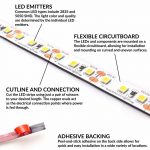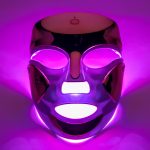Last Updated on 10 months by Francis
.jpg)
Using hot glue on LED strip lights is a common method for securing and mounting them in various applications. However, it is important to understand if hot glue is suitable for this purpose and the benefits and limitations of using it. LED strip lights are flexible circuit boards with integrated LEDs, providing versatile lighting solutions. In this article, we will explore the viability of using hot glue on LED strip lights and discuss the advantages and disadvantages of this method. We will also provide tips for using hot glue effectively and explore alternative adhesive options such as double-sided tape and adhesive mounting clips. Finally, we will highlight important precautions and safety measures to consider when using hot glue on LED strip lights.
Contents
Key takeaway:
- Hot glue can be used on LED strip lights: It is suitable for securing and protecting LED strip lights in various applications.
- Advantages of using hot glue: Hot glue provides a strong bond, is easy to apply, and is cost-effective compared to other adhesives.
- Disadvantages of using hot glue: Hot glue may not be suitable for high-temperature environments and can be difficult to remove or modify once applied.
Is Hot Glue Suitable for LED Strip Lights?
Hot glue is indeed suitable for securing LED strip lights in certain situations. It offers a strong adhesion between the lights and the surface they are mounted on, ensuring they stay securely in place.
However, it is crucial to take into account the heat generated by LED strip lights. These lights can produce heat, particularly when used for extended periods or in high-intensity settings. Hot glue, on the other hand, has a lower melting point and may not be able to withstand the heat. As a result, it can melt and lose its adhesive properties.
Furthermore, using hot glue may pose difficulties if you ever need to remove or make adjustments to your LED strip lights in the future. Once the hot glue sets, it forms a robust bond that can be challenging to detach without causing damage to the lights.
If you are dealing with LED strip lights that generate a significant amount of heat or anticipate the need for future changes or adjustments, it is advisable to consider alternative mounting methods such as adhesive tape or specialized clips designed specifically for LED strip lights.
While hot glue can be suitable for securing LED strip lights in some cases, it is important to carefully weigh the heat generated and the potential need for future adjustments before selecting hot glue as a mounting method.
tagsWhat are LED Strip Lights?
LED strip lights, also known as LED light strips, are a flexible and versatile lighting option. These strips consist of multiple light-emitting diodes (LEDs) placed closely together. The strip lights are made of a flexible material, which allows them to be easily bent or curved to suit different applications.
LED strip lights are commonly used for both decorative and functional lighting purposes. They offer a wide range of color options, making them ideal for creating different atmospheres and moods. Whether it’s accent lighting, under cabinet lighting, signage, or entertainment applications, LED strip lights can be tailored to fit specific requirements.
One of the advantages of LED strip lights is their flexibility. They are available in various lengths and can be cut at designated areas to cater to the desired length. This flexibility makes them suitable for a wide range of projects.
LED strip lights are also energy-efficient, consuming less power compared to traditional lighting options. Additionally, they have a long lifespan and can last for thousands of hours of use, making them a durable and cost-effective lighting solution.
Installing LED strip lights is simple and hassle-free. They can be easily attached using adhesive backing or mounting clips. The lights are typically powered by a low-voltage power supply, ensuring safety in various settings.
Another benefit of LED strip lights is the wide range of brightness levels and color variations they offer. Users have the freedom to create unique and customized lighting effects to suit their needs and preferences.
Benefits and Limitations of Using Hot Glue on LED Strip Lights

Photo Credits: Infraredforhealth.Com by Wayne Jackson
Discover the incredible perks and drawbacks of using hot glue on LED strip lights. Unleash your creative side as we delve into the advantages of utilizing hot glue, unlocking endless possibilities to illuminate your space. But beware, we’ll also shed light on the disadvantages that come with this adhesive technique, ensuring you make an informed decision for your LED strip light projects. Let’s dive in and explore the world of hot glue and its impact on your dazzling lighting endeavors.
Advantages of Using Hot Glue
-
Easy application: Using hot glue on LED strip lights is a quick and hassle-free process. The hot glue can be easily melted and applied onto the strip lights, providing a strong adhesive bond.
-
Strong bond: Hot glue offers a strong bond to secure the LED strip lights in place. It creates a tight seal that prevents the lights from loosening or falling off, even in high vibrations or movements.
-
Flexibility: Hot glue is a flexible adhesive, allowing the LED strip lights to maintain their flexibility and adjust to curved surfaces. This ensures that the lights can be installed in various shapes and configurations.
-
Heat resistance: Hot glue is heat resistant, making it an ideal choice for LED strip lights that generate heat. It can withstand the temperatures emitted by the lights without melting or losing its adhesive properties.
-
Non-conductive: Hot glue is a non-conductive material, providing electrical insulation for the LED strip lights. It helps to prevent short circuits or electrical hazards that can occur when the lights come into contact with metal surfaces.
Pro-tip: Before applying hot glue to the LED strip lights, make sure to clean the surface thoroughly to ensure proper adhesion. Additionally, it is recommended to test a small area first to ensure compatibility and avoid any potential damage to the lights.
Disadvantages of Using Hot Glue
Using hot glue on LED strip lights has several disadvantages.
One major disadvantage is that it can cause damage to the lights.
Due to the heat from the glue gun, the plastic housing of the LED strip lights can melt, resulting in malfunctioning or completely unusable lights.
As a consequence, this can lead to wasted time, effort, and money.
Another drawback of using hot glue is the difficulty in removing it from the LED strip lights.
Hot glue is known for its strong adhesive properties, making it challenging to remove without causing further damage.
This can impede the flexibility and versatility of the LED strip lights, hindering any changes or repairs that may be necessary.
There is also a risk of overheating when hot glue is used on LED strip lights.
The lights generate heat during operation, and the addition of hot glue can make this issue worse.
This excessive heat can potentially lead to the LEDs burning out faster or even causing a fire hazard.
Moreover, the limited reusability of hot glue on LED strip lights is another disadvantage.
Once hot glue is applied, it becomes difficult to reposition or reuse the lights in a different location.
Removing hot glue may cause damage or prevent easy removal, limiting the lifespan and versatility of the LED strip lights.
Lastly, hot glue can create a messy and unprofessional appearance on LED strip lights.
Oozing out or leaving visible residue, the glue detracts from the overall aesthetic appeal of the lights.
This can be particularly disadvantageous if the lights are used for decorative purposes.
Tips for Using Hot Glue on LED Strip Lights
Discover the secrets to using hot glue on LED strip lights like a pro!
In this section, we’ll dive into valuable tips that will elevate your experience with hot glue and ensure optimal results.
From choosing the right type of hot glue for your LED strip lights to mastering the proper application techniques, we’ve got you covered.
Get ready to enhance the durability and stability of your LED strip light projects with these expert insights.
Let’s get started!
Choosing the Right Type of Hot Glue
When choosing the right type of hot glue for LED strip lights, it is important to consider the following:
- Viscosity: Opt for a hot glue with a medium viscosity to ensure proper adhesion without excess dripping or oozing.
- Temperature: Select a hot glue that melts at a lower temperature to prevent damage to the LED strip lights or potential burns during application.
- Clear or colored: Depending on your preference, you can choose between clear hot glue that blends in with the LED strip lights or colored hot glue that complements the overall design.
- Drying time: Consider the drying time of the hot glue to ensure it allows enough time for proper positioning and adjustments before it sets completely.
- Flexibility: Look for a hot glue that offers flexibility once it has fully cured. LED strip lights may require some flexibility to accommodate bends or curves.
- Compatibility: Check the compatibility of the hot glue with the material of your LED strip lights. Some hot glue may work better with certain types of surfaces or coatings to provide optimal adhesion.
By considering these factors, you can choose the right type of hot glue that offers strong adhesion, easy application, and compatibility with your LED strip lights.
Proper Application of Hot Glue
Before applying hot glue to LED strip lights, it is crucial to properly clean the surface and ensure that it is free of any dust or debris. This will enhance the adhesion of the glue.
Next, plug in the specifically designed glue gun for LED strip lights and allow it to heat up.
Once the glue gun is heated, gently squeeze the trigger to apply a thin line of hot glue along the desired area of the LED strip lights.
To achieve an even application and prevent any uneven bumps or lumps, quickly spread and smooth out the hot glue using a craft stick or a small spatula before it cools down.
Immediately after spreading the hot glue, firmly press down on the LED strip lights to secure them in place. Hold them in position for a few minutes until the hot glue has fully cooled and hardened.
Following these steps will help in properly applying hot glue and ensuring that the LED strip lights remain securely attached to the surface. Remember to exercise caution when handling hot glue to avoid any burns or injuries.
Alternative Adhesive Options for LED Strip Lights
Looking to stick your LED strip lights? Look no further! We’re diving into the world of alternative adhesive options for LED strip lights. From double-sided tape to adhesive mounting clips, we’ve got the lowdown on how to ensure your strip lights stay securely in place. Say goodbye to messy installations and hello to hassle-free lighting. Get ready to discover the best methods for keeping your LED strip lights where they belong, without the need for hot glue. Let’s dive in!
Double-Sided Tape
When it comes to securing LED strip lights, one popular option is double-sided tape. Here are some reasons why double-sided tape can be a suitable adhesive choice:
– Easy application: Double-sided tape is simple to use. Just peel off the backing and stick it onto the desired surface.
– Strong adhesion: This tape is designed to provide a secure hold, ensuring that the LED strip lights stay in place.
– Non-damaging: Double-sided tape is often designed to be removable without leaving behind residue or damaging the surface it is applied to.
– Versatile: Double-sided tape can be used on various surfaces, including walls, ceilings, and furniture.
– Concealment: The tape is typically thin and transparent, allowing it to blend in with the background and keep the focus on the LED lights.
However, it’s important to consider a few things when using double-sided tape:
– Surface compatibility: Ensure the tape is suitable for the surface you are attaching it to, as some tapes may not adhere well to certain materials.
– Weight capacity: Make sure the tape can support the weight of the LED strip lights.
– Environmental factors: Consider the temperature and humidity of the installation area, as extreme conditions can affect the performance of the tape.
…Adhesive Mounting Clips
When it comes to installing LED strip lights, adhesive mounting clips are the ultimate choice. Here are some important points to keep in mind:
- Effortless installation: Adhesive mounting clips ensure a quick and hassle-free installation process. All you need to do is remove the backing and securely stick the clips onto a clean and dry surface.
- Firm and secure grip: These clips guarantee a reliable hold, preventing any sagging or detachment of the LED strip lights.
- Flexible positioning: With adhesive mounting clips, you have the freedom to adjust the positioning of your LED strip lights. Simply slide them along the clips to achieve the perfect placement and alignment.
- No surface damage: Unlike some other adhesive options, mounting clips leave no residue or damage on the applied surface. This makes them ideal for rented spaces or whenever you want to avoid permanent alterations.
- Multiple applications: Adhesive mounting clips are compatible with a variety of surfaces, including walls, ceilings, and furniture. They offer a versatile solution for all your installation needs.
- Easy removal: If you ever need to reposition or remove the LED strip lights, the adhesive mounting clips can be easily detached without leaving any marks or causing any damage.
Precautions and Safety Measures
When using hot glue on LED strip lights, it is essential to incorporate precautions and safety measures to avoid any potential hazards.
- Protective equipment: It is important always to wear safety goggles and gloves to protect your eyes and hands from any hot glue splatters or burns as part of the necessary precautions.
- Surface protection: To prevent any hot glue from damaging surfaces or causing fires, it is recommended to place a protective covering, such as a heat-resistant mat or cardboard, underneath the work area.
- Temperature control: To reduce the risk of overheating the LED strip lights and causing damage, it is advisable to use a low-temperature hot glue gun. High-temperature glue guns can melt the adhesive on the strip lights or even lead to malfunctions.
- Appropriate adhesive: It is crucial to ensure that the hot glue you use is compatible with the materials of the LED strip lights. Certain adhesives may not stick well or could potentially damage the lights.
- Proper application: A key precaution is to apply the hot glue in small, controlled amounts to avoid excess glue build-up and potential heat transfer to the LED lights. It is essential to be mindful of the heat-sensitive components on the strip lights.
- Cooling time: After applying the hot glue, it is recommended to allow it to cool and harden completely before handling the LED strip lights. This will help ensure that the adhesive has properly bonded and will provide a secure attachment.
By incorporating these precautions and safety measures, you can use hot glue on LED strip lights safely, minimizing the risk of damage or accidents.
Some Facts About Can You Use Hot Glue on LED Strip Lights:
- ✅ LED lights can be secured using hot glue without causing any damage as hot glue does not contain harmful chemicals. (Source: LED Light Planet)
- ✅ High-temperature hot glue can provide a stronger bond and prevent the adhesive from melting due to the heat from LED strip lights. (Source: LED Light Planet)
- ✅ It is important to use the right amount of hot glue to ensure a secure bond without damaging the surface or the lights. (Source: LED Light Planet)
- ✅ Using hot glue sticks with high viscosities can prevent the liquid glue from seeping between the lights and weakening the bond. (Source: LED Light Planet)
- ✅ Rubbing alcohol can be used to remove hot glue from LED strip lights if necessary. (Source: LED Light Planet)
Frequently Asked Questions
Can you use hot glue on LED strip lights?
Yes, hot glue can be used to secure LED strip lights to surfaces. It is a quick and easy solution that provides a strong bond. However, it is important to consider the temperature of the glue gun and use the right amount of hot glue to avoid damaging the lights or the surface.
What is the right amount of hot glue to use?
Using the right amount of hot glue is crucial to ensure a secure bond without damaging the surface or the LED strip lights. Applying too much or too little glue can affect the strength of the adhesive. It is recommended to use the appropriate amount based on the specific application and to avoid over-applying the glue.
What should I consider when using hot glue on LED strip lights?
When using hot glue on LED strip lights, it is important to keep in mind the temperature of the glue gun. Using a glue gun with the appropriate temperature range will prevent the LED lights from getting damaged or melted. Additionally, using high-temperature glue can make the adhesion stronger and prevent the glue from melting due to the heat generated by the LED strip lights.
Can I use hot glue to secure non-waterproof rated LED strip lights?
Yes, you can use hot glue to secure non-waterproof rated LED strip lights. However, it is important to avoid contact between the hot glue adhesive and the circuit board of the lights. To prevent this, you can use heat shrink tubing as a barrier between the hot glue and the circuitry.
What are the drawbacks of using hot glue on LED strip lights?
While hot gluing LED strip lights is a popular and affordable method, there are some potential drawbacks to consider. These include the possibility of warping the surface of the lights, the risk of the adhesive getting stuck to unintended surfaces, the potential of over-applying the glue, and the possibility of seepage into the circuitry. It is important to use hot glue properly and consider these factors before applying it.
What are some alternative adhesives for securing LED strip lights?
In addition to hot glue, there are other adhesives that can be used to secure LED strip lights, such as E6000, super glue, silicone adhesive, and epoxy. The best adhesive to use depends on the specific application and requirements. It is important to choose a glue that is specifically meant for use with LED strip lights to avoid damaging the circuitry. These adhesives can typically be found at your local hardware store.

.jpg)

.jpg)




